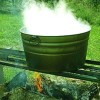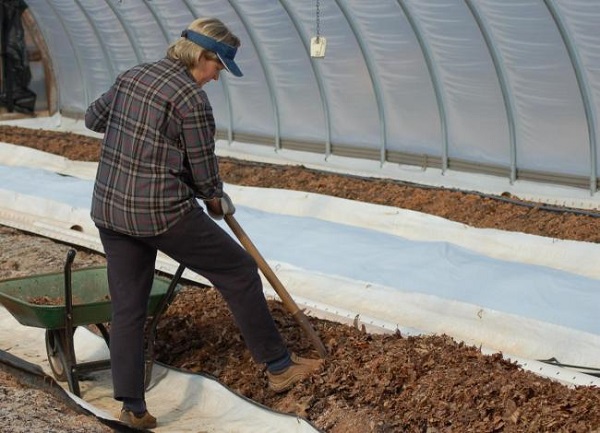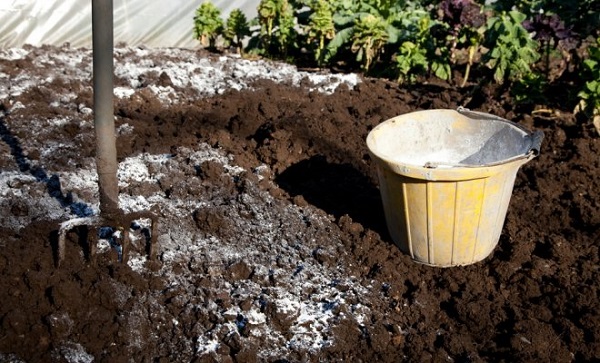What is used to cultivate the land in a greenhouse for disinfection
Content
Soil disinfection
Decontaminating the soil before planting is important in order to get healthy plants and a rich harvest. Almost all pathogenic microbes, as well as most insects, winter in the soil and frame of the greenhouse. In the fight against pests, chemical and biological preparations, steam treatment, high temperature are used. Most often, the procedures are carried out in the spring.
Chemical method
The soil is treated with chemicals. This is one of the most effective ways to eradicate pests once and for all. But at the same time, it is quite dangerous, both for human health and for plants. Chemical burns on the skin and mucous membranes, the destruction of even beneficial microorganisms is the price to pay for the absence of fungus and insects. However, if all safety rules are observed, most of the negative consequences can be neutralized.
One of the most common chemical treatments is bleach. For 1 square meter, you will need 200 g of lime, which must be mixed with loosened soil.
Another way is watering with 40% formalin. To do this, dilute 1 liter of formalin in 50 liters of water, use for spilling soil at the rate of 10 liters of solution per 1 square meter. After watering, collect the soil in one large pile, leave it for 2-3 days, and then distribute it evenly over the greenhouse. It is important to provide the greenhouse with good ventilation to avoid formalin vapor poisoning. The procedure should be carried out in a respirator.
You can also use copper sulfate treatment. When digging the soil in the greenhouse, sprinkle the soil with vitriol, at the rate of 40-100 g per 1 square meter.
Sulfur checkers are often used in the spring: they take 50-100 g of sulfur per 1 cubic meter of the greenhouse and set it on fire. Fumigation with sulfuric smoke helps to cope with almost all pests, however, the released sulfur dioxide settles in the soil and is subsequently absorbed by plants.
Video "Preparing the soil in the greenhouse"
How to cultivate the land in a greenhouse before planting is described in the video.
Biological
You can also disinfect the soil using a biological method. Of course, it is quite difficult to remove all leaves, roots and other organic debris from a large plot of land. Then special preparations come to the rescue, acting on the soil in a complex manner. Such substances not only eliminate excess organic matter by decomposition, but also inhibit the development of microorganisms.
These drugs are not too expensive, and at the same time, they are quite effective. Using Fitosporin-M or Baktofit you can save time and effort that would be spent on removing small organic residues from the soil.
In addition, biological substances do not change the microflora of the soil. All microorganisms that can be beneficial for the plant are preserved and in the spring, when it finally warms up, perform their function in saturating the soil with useful microelements.
This method of soil cultivation is the most gentle and at the same time effective.The result of soil cultivation with biological substances has a long-term effect and pathogenic microflora and is flexible does not develop in the ground and on plants for quite a long time.
In order to disinfect the greenhouse soil, you should dilute the drug of your choice in water in a ratio of 100 grams per 10 liters. The main thing is that the water is devoid of chlorine particles, which suppress the effect of drugs. This soil treatment in greenhouses is carried out twice. The second time - two weeks after the primary watering of the earth with a solution.
Temperature
Temperature treatment is used not only for calcining and disinfecting seeds before planting seedlings, but also for disinfecting the soil in the greenhouse. Processing can be carried out with both low and high temperatures. Freezing the room is best done in February or early March, when the outside temperature is really low. Leave the greenhouse open for 5-6 days to freeze the soil deeply. Such processing helps to destroy more than 70% of pathogenic microbes.
In order to surely get rid of all pests, heat treatment should be resorted to. The easiest way is to water the soil in the greenhouse with only boiled water and leave to dry.
Steam treatment using a steam generator is widespread. It is important to observe safety precautions when working with steam in order not to get burned. If you do not have a steam generator, but the greenhouse is heated, then water the ground, and then turn on the heating at full capacity. At the same time, it is important to keep the room closed in order to create the effect of a bath inside the greenhouse. It is better to do this in the spring before planting the plants.
Another method of steaming is for greenhouses that do not have heating. In spring, when the air temperature is steadily high, pour hot water over the soil in the greenhouse and close the room. The sun's rays will warm the air inside, so that the water will begin to evaporate.
Soil renewal
In addition to the proposed ways to clear the soil from infection, you should remember about one of the most effective ways to avoid contamination of planted crops. The simpler method, soil replacement, is often the most effective. In small greenhouses, replacing the soil is not at all difficult. But in large ones, they usually remove up to 8 centimeters of the top layer of the earth, replacing it with fresh soil from open beds.
The removed soil should not be mixed with soil in the beds. It should be kept in a separate place and layered with disinfectants and humus. After a few years, this land will again become suitable for planting its crops in it without the risk of contamination.
If it is not possible to carry out a soil replacement, you should use all the listed methods of land cultivation. It is best to do this in the spring, before planting a plant culture in it.
Video "We process the greenhouse with copper sulfate"
How to properly process a greenhouse with copper sulfate is discussed in the video.







